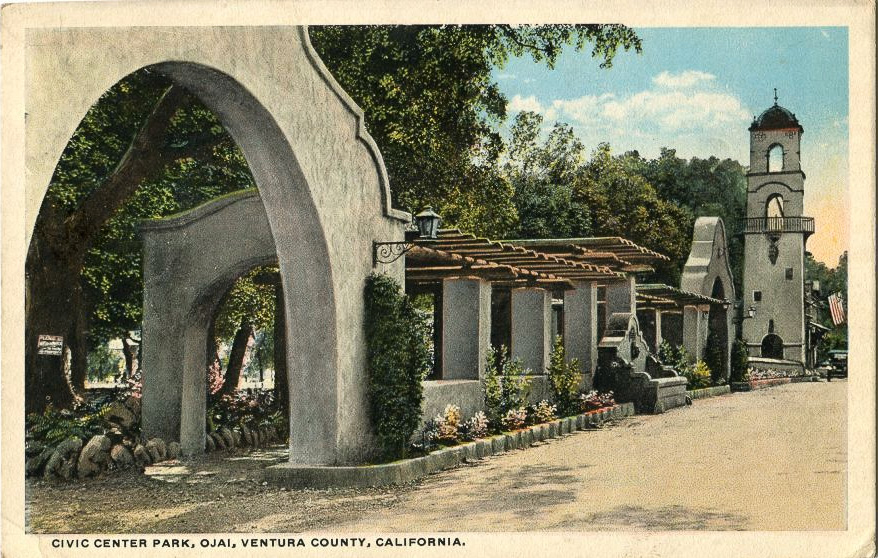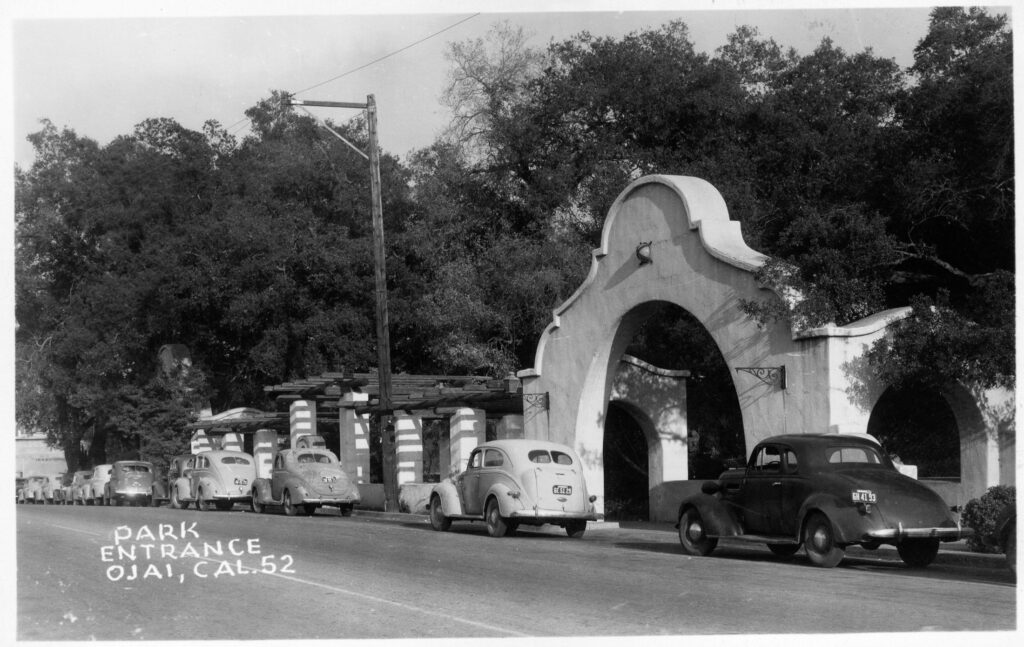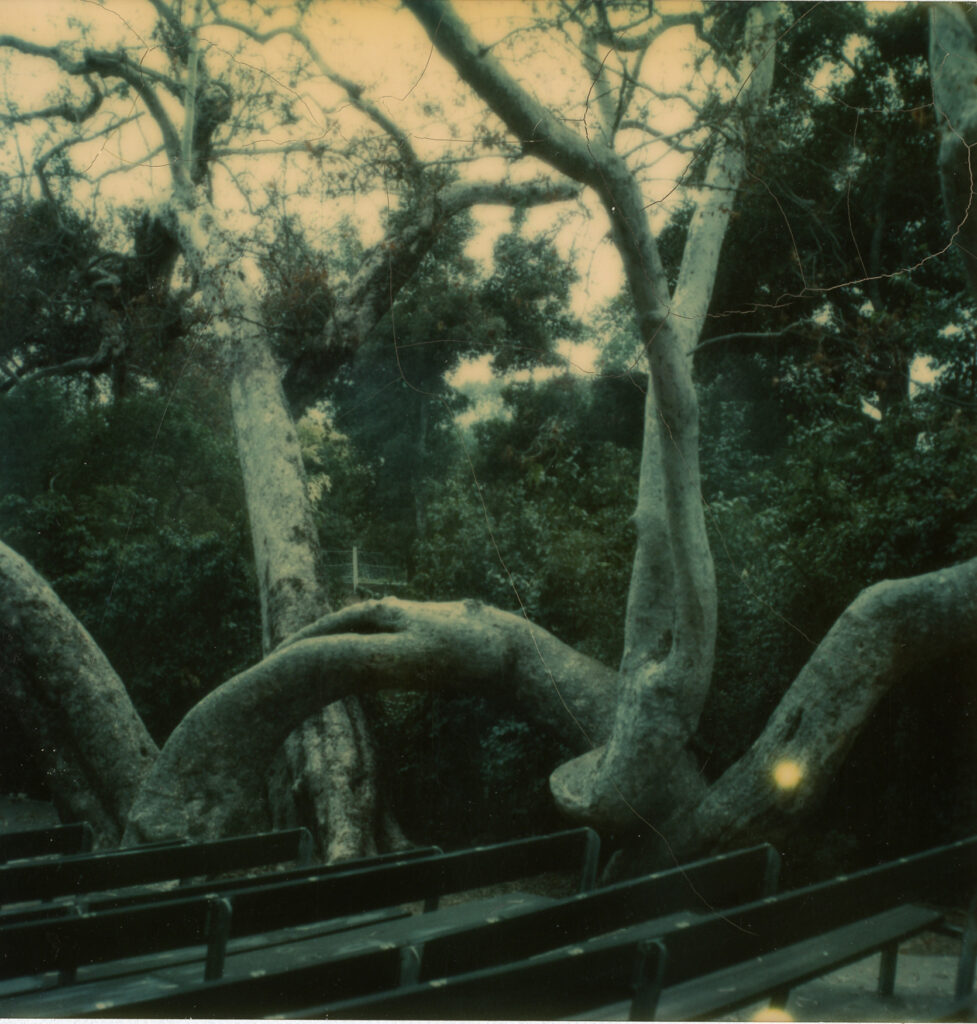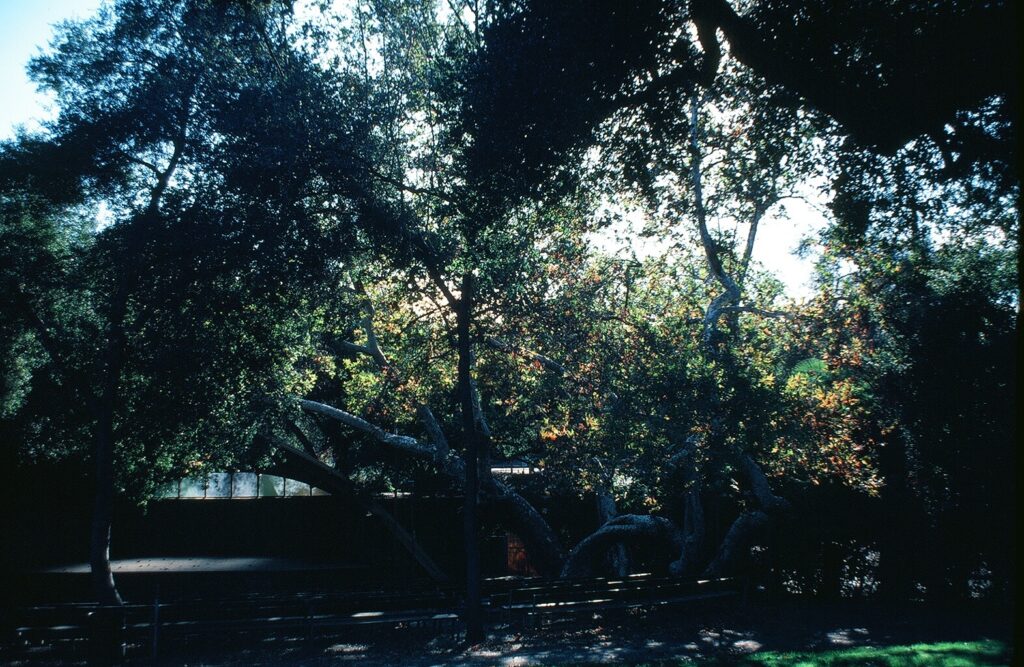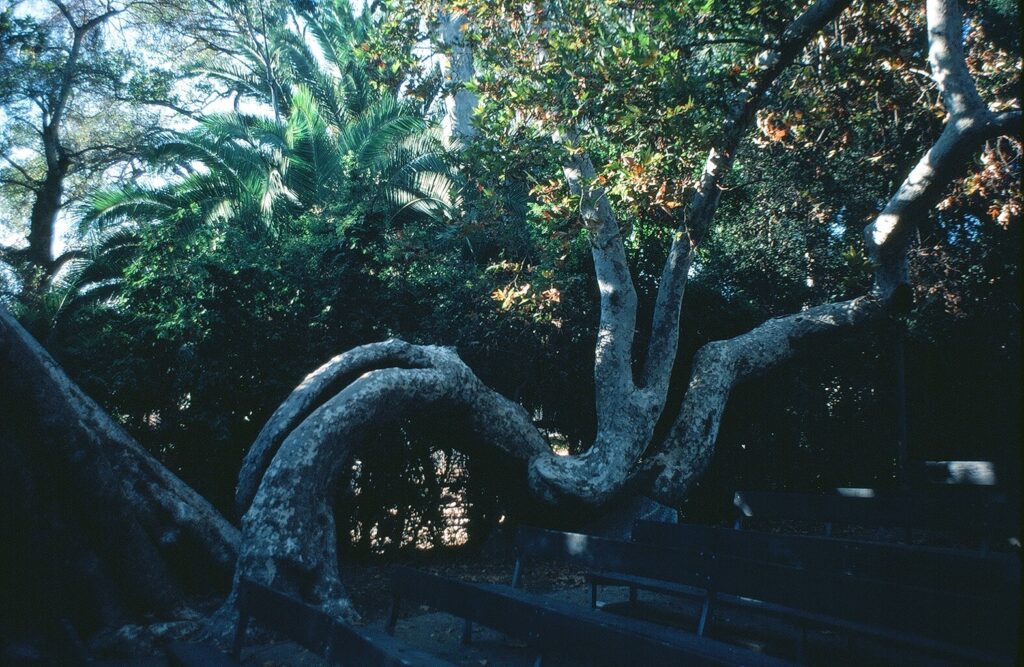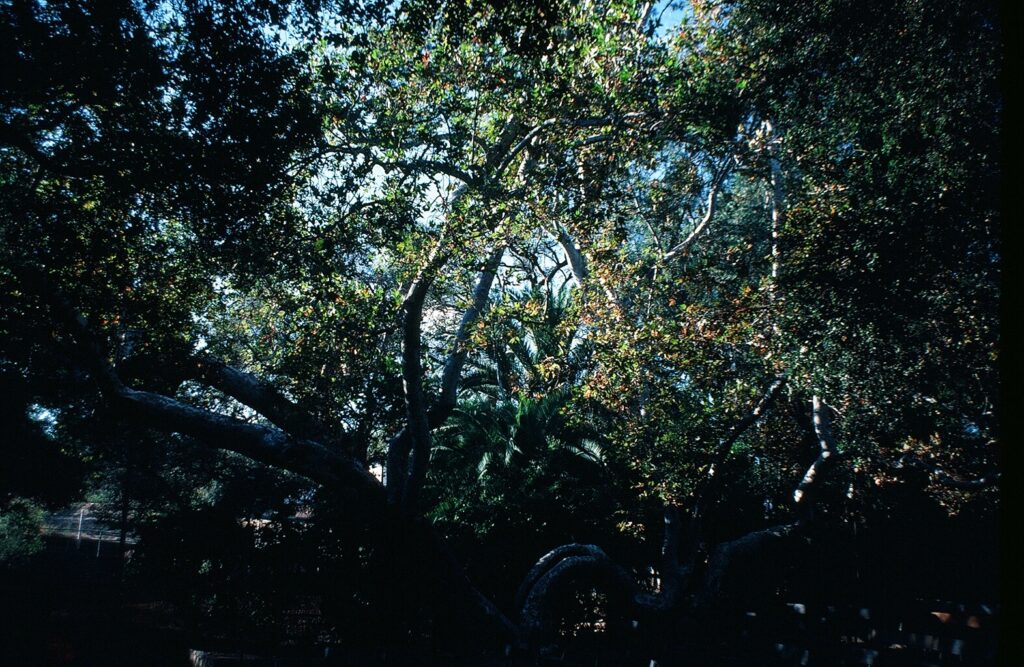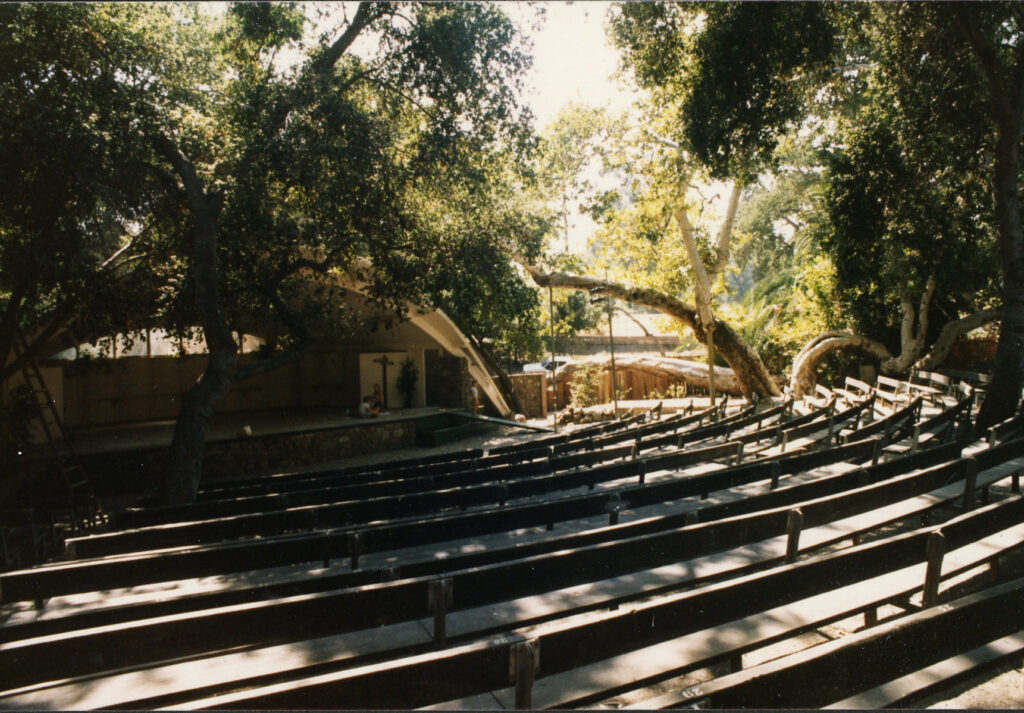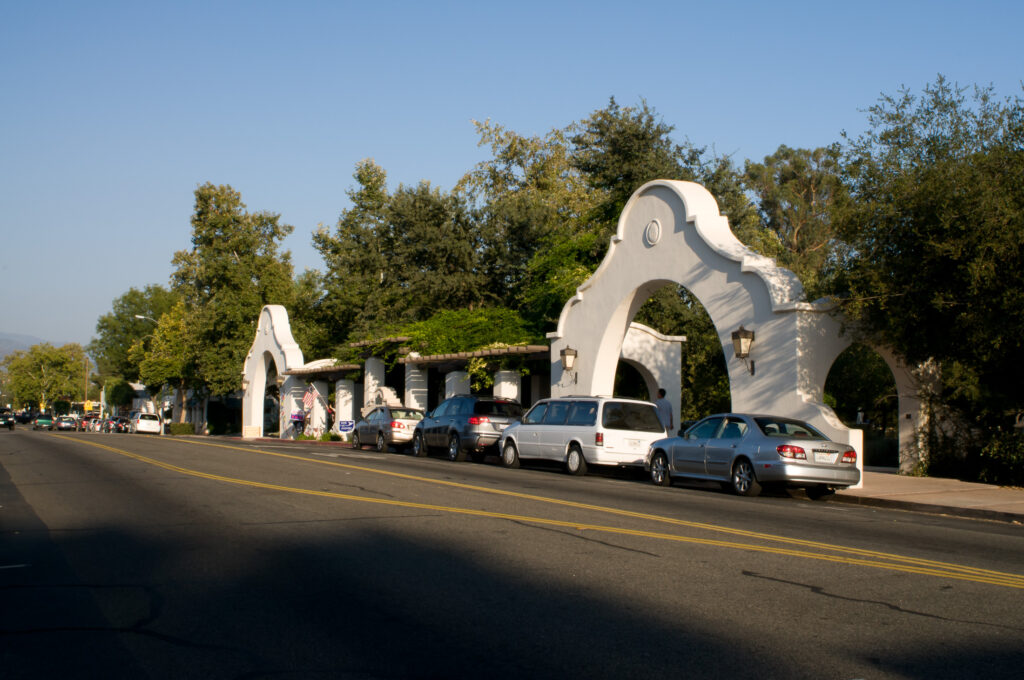Ventura County Landmark No. 27: Libbey Park Bowl Sycamore Tree
Historical Background
Chumash Indians were said to have bent the sapling tree to mark the beginning of an important trail or a fine camping spot. The top rooted to form an arch which was known to the Chumash as the Peace Tree or Marriage Tree. An article by George T. Channing of Ojai, 1953, says, “Over 120 years ago the Indians called a peace conclave around the tree and agreed never to battle in the valley of The Ojai….As a marriage tree, the Indians believe that two lovers walking together through the arch are united by the Great Spirit…”.
The Chumash historically occupied the area between the southerly end of Monterey County and Malibu (Post/Hazeltine Associates, 2021). The Ventureno Chumash were a semi-sedentary society with a stratified social order, extensive trade networks, and a maritime adaptation characterized by wood plank canoes and trade with neighboring groups, including those on the Channel Islands. In 1782, Mission San Buenaventura was established by the Spanish government in what is now downtown Ventura. The mission system was intended to Christianize the Chumash and transform them into agriculturists and subjects of the Spanish Empire (Post/Hazeltine Associates, 2021).
Libbey Bowl
The original Bowl was built in Edward Drummond Libbey’s Civic Center Park in phases from 1952 to 1957 by a community effort led by the Ojai Music Festival (City of Ojai, Ojai Music Festival, and Ojai Valley Service Foundation). The shell was designed by architects Austen Pierpont of Ojai and Roy C. Wilson of Santa Paula. Originally known as “Civic Center Bowl,” and “Festival Bowl,” among other names, it became known as “Libbey Bowl” in the 1980s after Civic Center Park was given to the City of Ojai and renamed Libbey Park.
Inaugurated by Aaron Copland at the 1957 Ojai Music Festival, Libbey Bowl has hosted several of the world’s most influential artists. In addition to serving as the home of the internationally acclaimed Ojai Music Festival, Libbey Bowl has housed important community and cultural events including the Storytelling Festival, Illusions Theater, Fourth of July Celebration, Memorial Day Celebration, Mexican Fiesta, and many others (City of Ojai, Ojai Music Festival, and Ojai Valley Service Foundation).
By 2008, Libbey Bowl had suffered from over 50 years of wood rot, termite damage, and heavy use. These damages proved irreparable and the Bowl was in danger of being condemned. In the fall of 2008, the City of Ojai and the Ojai Music Festival began working together to build a new Libbey Bowl and Ojai architect David Bury was hired to create a design that evoked the aesthetics, intimacy, and harmony with nature that characterized the original Bowl, as well as to make critical design improvements backstage and for audiences. The Ojai Music Festival, with support from the Ojai Valley Service Foundation, raised over $3 million from its patrons, the Ojai community and donors beyond, to partner with the City of Ojai in building the new Libbey Bowl (City of Ojai, Ojai Music Festival, and Ojai Valley Service Foundation).
On June 4, 2011 Dawn Upshaw, eighth blackbird, Claudio Ragazzi, Octavio Brunetti, and Michael Ward-Bergeman inaugurated the new Libbey Bowl, joined by over 100 of Ojai’s own musicians, for a free community Day of Music, produced by the Ojai Music Festival (City of Ojai, Ojai Music Festival, and Ojai Valley Service Foundation).
Additional Reading
References
City of Ojai, Ojai Music Festival, and Ojai Valley Service Foundation. The History of Libbey Bowl. Ojai, California.
Post/Hazeltine Associates (September 3, 2021). Historic Resources Report, 76 Oak Drive, Ojai Valley, Ventura County, California.
Date Designated: June 1975
Location: 650 feet south of the post office at Ojai Avenue and Signal Street, Ojai
Photos:


